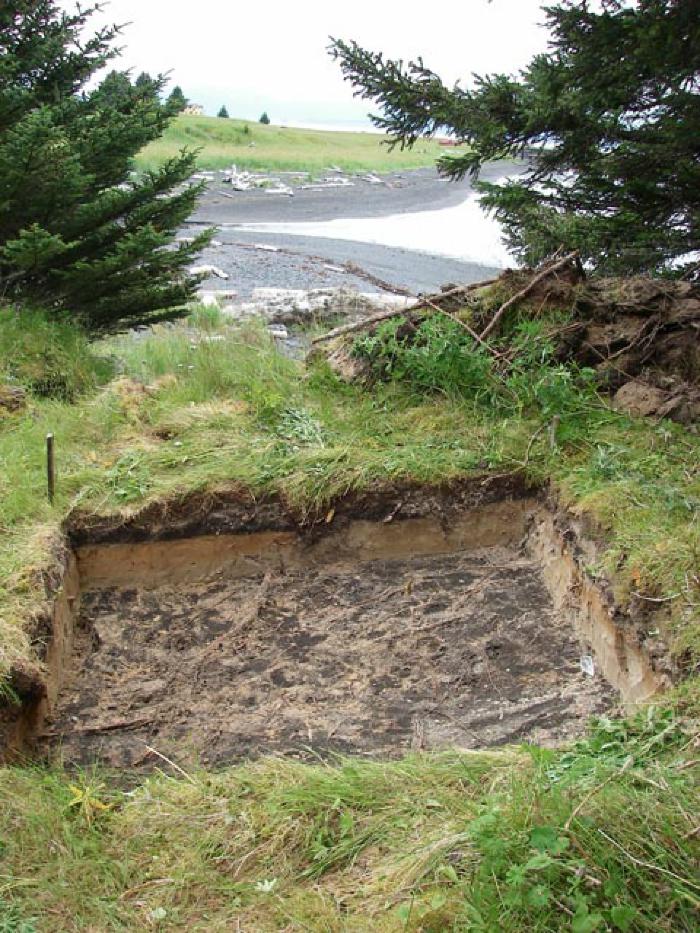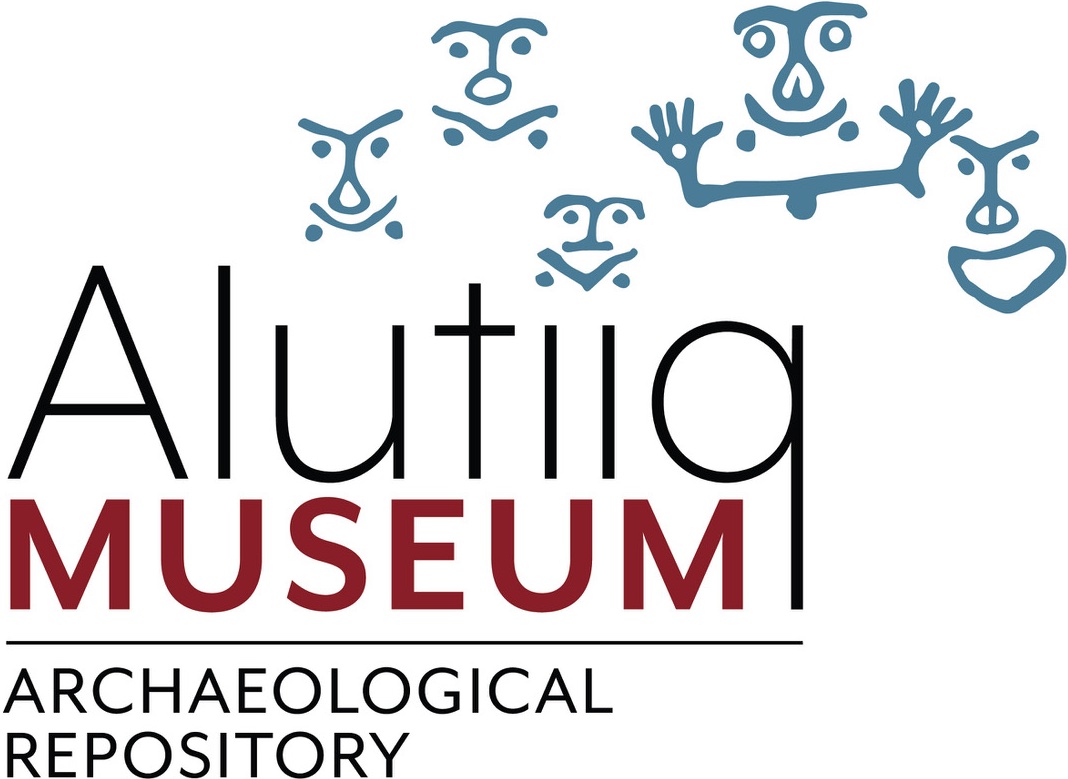Ash — Paulaq, Peluq

The Alutiiq word for ash—paulaq or peluq—usually refers to wood ash. This is the fine, grey sediment found in the bottom of a fire pit or a wood-burning stove after a hot fire. Cleaning the wood ash out of the household stove was a common task in the decades before Alutiiq families adopted oil burning and electric stoves. Wood ash is also a common find in archaeological sites, in and around the rock-lined hearths where people cooked. However, it is just one of the types of ash Kodiak researchers encounter. Volcanic ash is the other.
Although Kodiak has no volcanoes, it lies adjacent to the volcanically active Alaska Peninsula. Over the millennia, the Gulf of Alaska’s strong winds have transported quantities of this ash to Kodiak, creating distinctive layers. These layers help scientists interpret the past. A good example is the ash deposit from the 1912 eruption of Mt. Novarupta, known locally as the Katmai ash. Any materials found below this layer, which covers roughly half the archipelago, date prior to March 27, 1912: the date the ash began to accumulate.
Layers like these are known as stratigraphic markers. Although digging animals and people can rearrange the position of ash deposits relative to cultural remains, stratigraphic markers are still an excellent research aid, because they provide a limiting date. They also document major environmental events that impacted the lives of Kodiak’s first residents.
